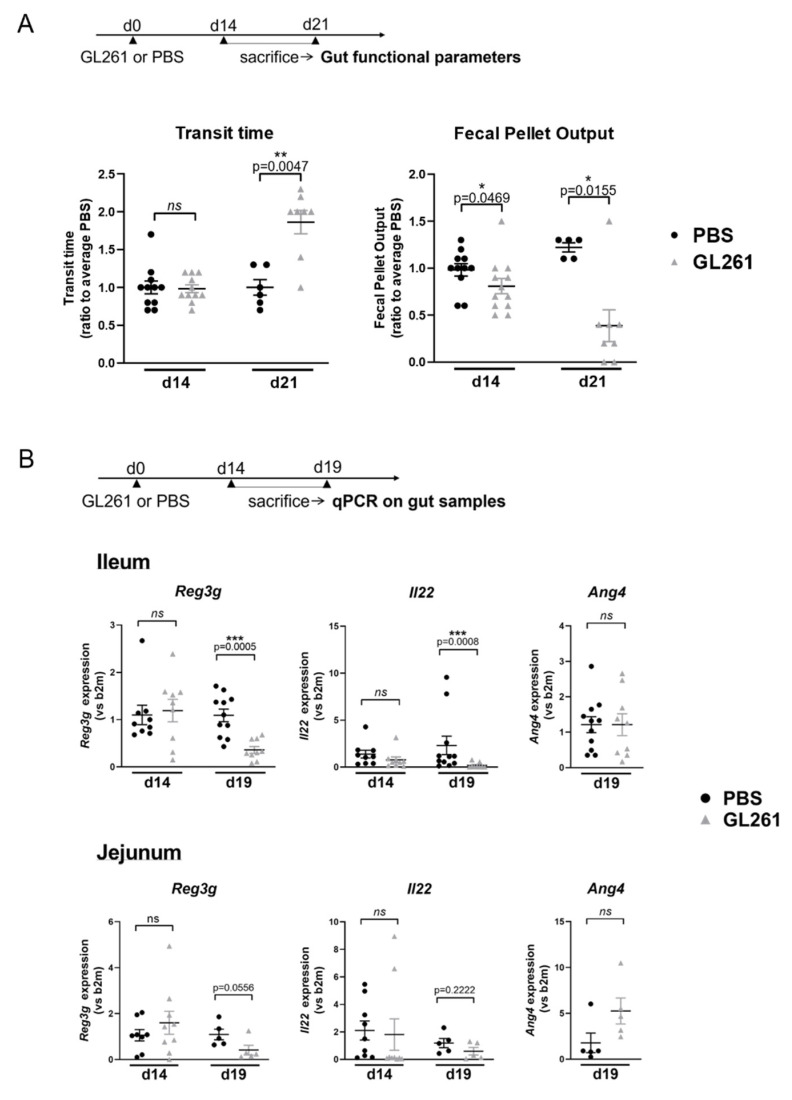Figure 1.
Changes in gastrointestinal motricity and expression level of genes related to small intestinal immunity in mice with late-stage glioma (A) Total transit time and fecal pellet output in mice injected with GL261 or PBS, 14 days (d14) and 21 days (d21) after the surgery. Transit time represents the latency before rectal expulsion of orally administered carmine red. Fecal pellet output is the number of stools expulsed in 2 h. Parameters are expressed as percentages of the average value of PBS-treated mice. All values represent means ± SEM (PBS: n = 5–6; GL261: n = 5–8 for d21 and PBS: n = 11; GL261: n = 11–12 for d14). Statistical analyses were performed with the Mann–Whitney U-test, * 0.01 ≤ p < 0.05, ** 0.001 ≤ p < 0.01 (B) Expression level of genes involved in epithelial antimicrobial defense (Reg3γ, Il22, Ang4) in the ileum and jejunum of mice 14 days (d14) and 19 days (d19) after the surgery. Expression levels are expressed in reference to the b2m housekeeping gene and have been normalized to the average gene expression in PBS-injected mice. All values represent means ± SEM (PBS: n = 11; GL261: n = 9 for the ileum and PBS: n = 4–5; GL261: n = 5 for jejunum for d19 and PBS: n = 8–9; GL261: n = 9 for d14). Statistical analyses were performed with the Mann–Whitney U-test, *** 0.0001 ≤ p < 0.001, ns: non-significant.

